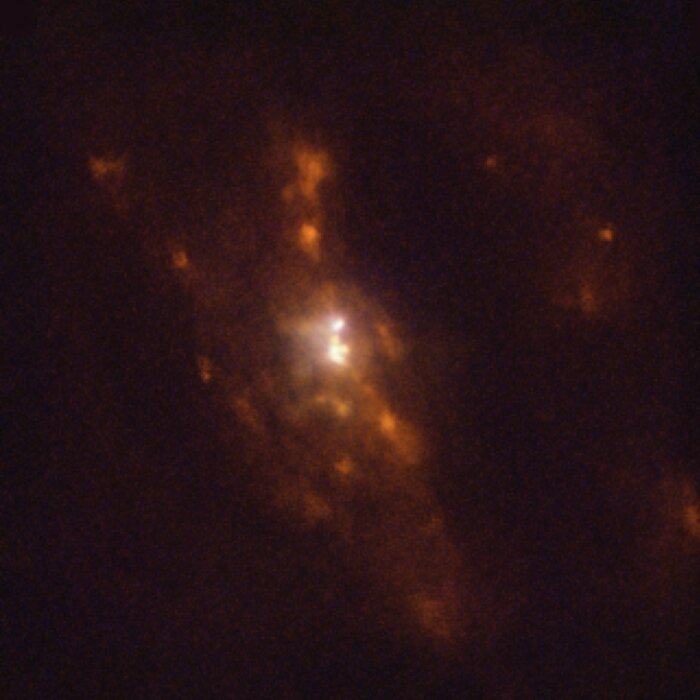Closest pair of supermassive black holes as seen by MUSE
In this Picture of the Week we peer closer into the galaxy UGC 4211, where astronomers have discovered two supermassive black holes on the verge of merging, separated by just 750 lightyears — the closest to have been found to date and less than half of the previous record. They used ESO’s Very Large Telescope (VLT), the Atacama Large Millimeter/submillimeter Array (ALMA), of which ESO is a partner, and other telescopes to detect the bright light produced as the black holes engulf material in their vicinity.
The image shown here was made using data from the MUSE instrument on ESO’s VLT in Chile. It shows emission from oxygen, nitrogen and hydrogen in blue, green and red respectively. Red indicates areas of star formation, and the bright white central region indicates the presence of two supermassive black holes swallowing material from their surroundings.
Combining data from the VLT, ALMA and other telescopes, a team led by Michael Koss at Eureka Scientific in the US could identify these two black holes and study them in detail. These black holes likely found each other when their host galaxies collided and merged. Observing this system will help improve our understanding of how galaxies and their supermassive black holes grow as they merge.
Alternative versions of this image
Credit:ESO/Koss et al.
Over de afbeelding
| Id: | potw2302c |
| Type: | Observatie |
| Publicatiedatum: | 10 januari 2023 06:00 |
| Grootte: | 641 x 641 px |
Over het object
| Naam: | UGC 4211 |
| Type: | Early Universe : Galaxy : Component : Central Black Hole |
| Constellation: | Cancer |
| Categorie: | Quasars and Black Holes |
Wallpapers
Coordinates
| Position (RA): | 8 4 46.39 |
| Position (Dec): | 10° 46' 35.92" |
| Field of view: | 0.14 x 0.14 arcminutes |
| Orientation: | North is -0.0° left of vertical |
Kleuren & filters
| Band | Golflengte | Telescoop |
|---|---|---|
| Optisch OIII | 500 nm | Very Large Telescope MUSE |
| Optisch NII | 575 nm | Very Large Telescope MUSE |
| Optisch H-alpha | 656 nm | Very Large Telescope MUSE |

